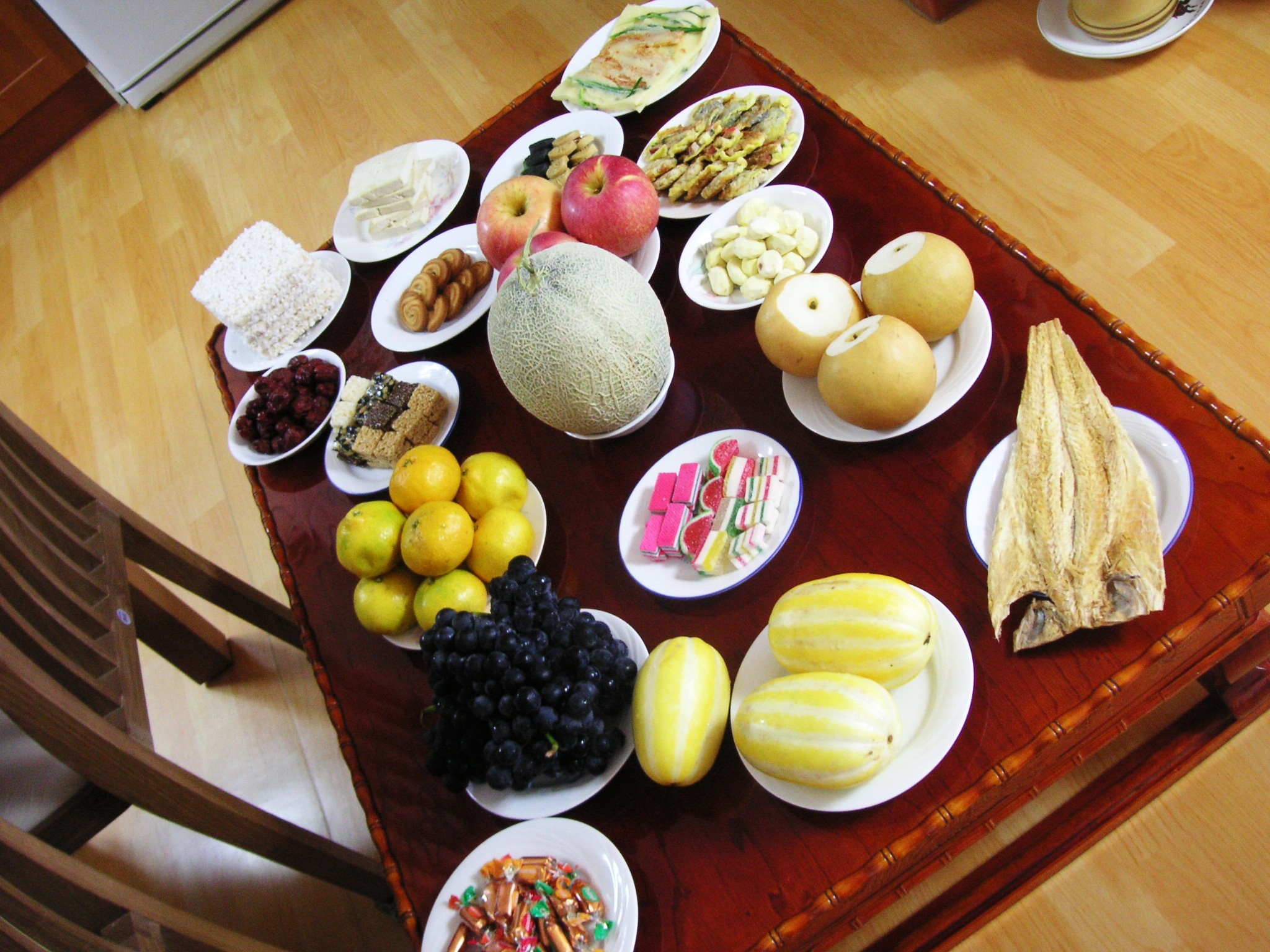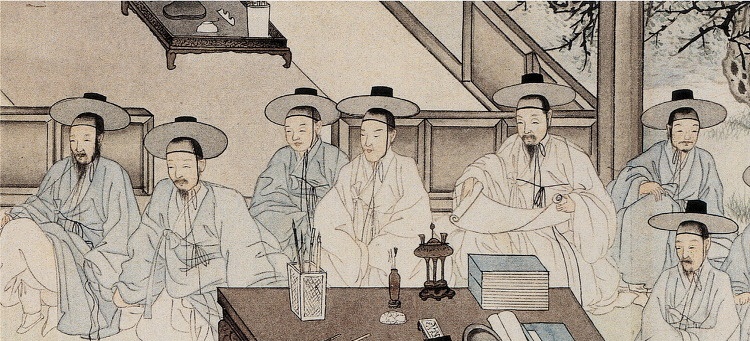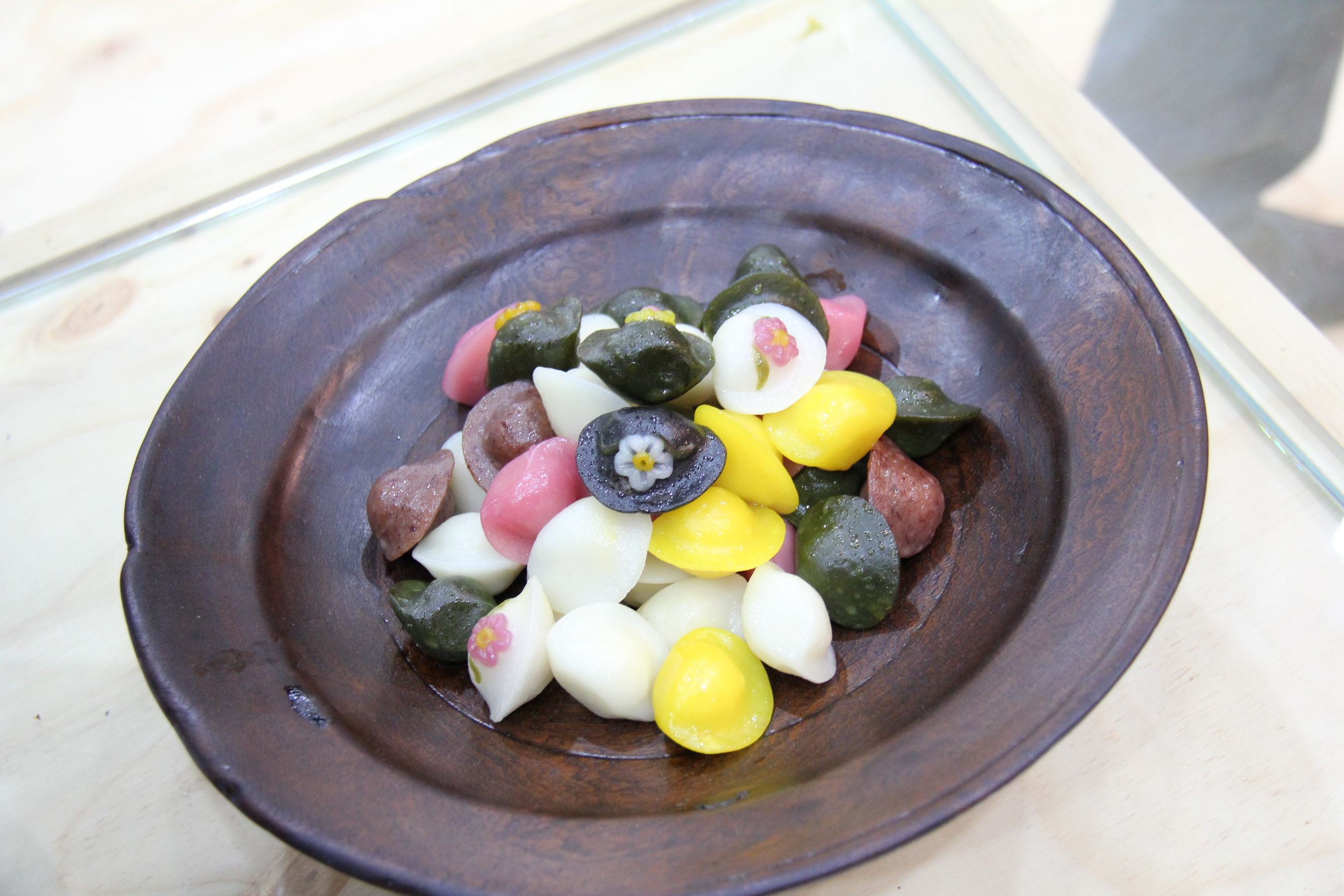Khushi Vaid, New Delhi
In South Korea, the advent of the full moon on the 15th day of the eighth lunar month – around the Autumn Equinox, which occurs at the end of summer or early autumn – marks a major national holiday known as Chuseok, occasionally known as Hangawi, it is usually a three-day holiday. Chuseok, one of Korea’s three major holidays; the others being Seollal (January 1) and Dano (a day of spiritual rites), is traditionally observed to thank the nature for a bountiful harvest and to wish for another generous harvest in the coming year. There are many folklores or chronicles regarding the origin of Chuseok and few of the concrete stories I’ll be sharing here to understand how this tradition got started.

Chuseok is said to have originated 2000 years ago during the reign of the third monarch of Silla, an ancient Korean kingdom. The monarch authorized a month-long weaving competition between two teams, with the winning team receiving a feast named Gabae, and other rewards. With that there were many other activities that used to take place such as Archery Competition, Weaving Competition and Martial arts demonstration as part of the celebration.
Many historians also believe that Chuseok derives from ancient shamanistic harvest moon festivals. New crops are dedicated to local deities and ancestors, implying that Chuseok began as a worship ceremony. Another common saying regarding Chuseok is that, Chuseok was initially intended to commemorate Silla’s victory over its rival kingdom Baekje. According to the legend, their king at the time, King Uija, discovered a turtle with strange patterns on its shell. According to his advisors, the signs represented “Baekje full moon, Silla half-moon.” This implied that Baekje would fall and Silla would emerge apparently referring to the buffing and fading of the moon. This would surely explain why moon is still so imperative during Chuseok.

Like in every festival, there are some customs or traditions that has to be followed to wholesomely conclude a festival. In Chuseok, Koreans visit to their ancestral homelands to feast on traditional Korean foods such as Songpyeon and rice wines such as Sindoju and Dongdongju, this festival is one of three festivals in which all family members come together and celebrate. In modern times, many Koreans live apart from their parents in capital city Seoul for the purpose of jobs and many other opportunities residing in the capital. Travelling back to the family often is not that easy in such busy time and schedule and usually bizarre traffic. But, Chuseok is still a highly traditional celebration, with many of the old customs still in place.
There are two primary Chuseok traditions: Charye and Seongmyo, which is generally accompanied by Beolcho. Chuseok celebration starts off with the morning ritual Charye in which all family members gather together and hold a memorial service in glory of their ancestors, symbolising the return of all favours and respect back to them. The food offered during the memorial service is usually the new or recent harvested rice, Songpyeon rice cakes, fruits and vegetables and alcohol. The placement of Charye foods on the table is also noteworthy: traditionally, rice and soup are served on the North, while fruits and vegetables are served on the South, meat dishes are served on the West and in the middle, while rice cake and some drinks, such as makgeolli or soju, are served on the East, but this all may vary according to the province. Among all of this another main characteristic about Charye is bowing to your ancestors and elders.
Another common ritual during Chuseok time is Seongmyo and Beolcho in which family members visit to ancestral grave sites (seongmyo), and remove weeds around their ancestor’s grave and clean it (beolcho). In every festival there are some common popular dishes that are indeed made year by year with some other special food. In Chuseok, Songpyeon (Korean traditional rice cake) is one of the most common representative dish that is made with ingredients such as rice powder, sesame seeds, black beans, mung beans, cinnamon, pine nut, walnut, chestnut, jujube, and honey.
What makes this rice cake special is its steaming process. Songpyeons are steamed over a layer of pine needles, which is a very impeccable step. The word Song in songpyeon means a pine tree in Korean, which is now inevitable why pine needles play a crucial part because it not only contributes to the aromatic fragrance but also give distinctive taste and beauty. It is widely held that those who are successful in crafting beautifully shaped songpyeons will have a lovely child or have a successful marriage.

Another significant thing about songpyeon is its shape which resembles that of full moon and crescent moon. The shape of it got popularise after the legendary tale of 2 rival kingdoms mainly Baekje and Silla as I mentioned earlier. As it is said that “Baekje full moon, Silla half-moon” which means that the full shape before folding sonpyeon resembles Baekje and then when stuffed and folded, it resembles Silla. As Baekje got defeated by Silla, the assumption of Silla rise got evident. Koreans have long thought that a half-moon form portends a prosperous future or victory. As a result, during Chuseok, families congregate to eat half-moon-shaped Songpyeon under a full moon, yearning for a brighter future.

Other prominent dishes and drinks during Chuseok are Hangwa, Japchae, Jeon and Bulgogi. Baekju or dubbed as sindoju is the liquor commonly drunk on Chuseok and it is made with newly harvested rice. A very common saying by the Korean elders is, if you are able to drink all the drinks which are drunk by their ancestors then there would be nothing to be scared off. A lot of traditional games and performances are enjoyed during this time to enjoy the bountiful harvest. Few of them are Ganggangsullae, Ssireum, Sossaum, Juldarigi and Dak Sa Um. In Ganggangsullae, all women adorning in hanbok gather together under the full moon to present a traditional dance as a prayer for generous harvest. They link their hands and perform in circular formation, singing and rotating clockwise. The speed of dance increases with the occurrence of dawn.
Another prominent traditional game is Ssireum which is a wrestling sport, in this opponents’ wrestle with each other while holding each other’s belt known as Satba. The one who wins to bring the opponent on the ground is considered as the winner. The sport dates back to the Joseon Era and played usually during Dano as well.
As a foreigner, visiting Korea at the time of Chuseok may look like visiting a place without humans because everyone is busy in celebrating with their families but if you have a Korean acquaintance with you then you can also get a closer look towards this festival. Personally experiencing Chuseok would be a heart-warming understanding.
What are your thoughts on this lovely festival of South Korea, Chuseok? Tell us in the comments.

Happy Chuseok Everyone ❤️ well written 👏
Happy Chuseok all!!!
Happy Chuseok Yeorobon!!
I really want to experience the tradition and culture of Korea! imagine wearing a beautiful hanbok and enjoyed such lovely festival will all your loved once and have those delicious cuisines (there comes the foody me ;))!
Very well written!
Happy chuseok everybody 💗💗
Happy Chuseok Everyone!!♥️
I’m really amazed by the Koreans like how they keep the traditions and modernity at a same time. I wish to be a part of chuseok celebration once.
Happy Chuseok everyone ❤️❤️
Happy Chuseok!!🎉🎉🌻
Loved reading about the festival in detail! Happy Chuseok!💕
This article is so informative, I got to know a lot about Chuseok
Even though people say that during Chuseok, one can get a lot of traffic.. I would love to travel during that time. ☺️
Happy Chuseok ✨
Happy Chuseok yeorobun 💙
Indeed South korea is dominating with it’s music, entertainment and arts and also preserving it’s tradition and culture at the same time🙌🏽💙
Again happy Chuseok to everyone ✨
Happy Chuseok 🍁🌕✨
The article provides an insightful👍 information. I was amazed to know that dish placement changes according to province.
Looks so good 😊